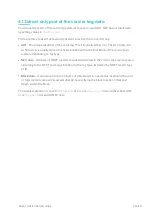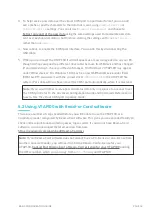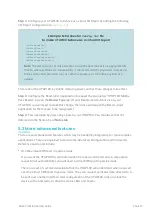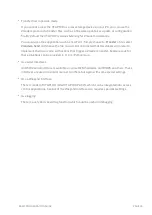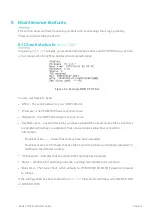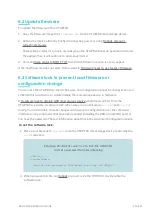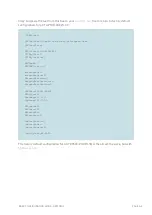
BASIC CONFIGURATION GUIDE
PAGE 25
If your VTAP100 board has a daughter board on top, as is the case for a VTAP100-PACW,
you will need to lift the daughter board off, to reach these jumpers.
When you start the VTAP100, the presence of this jumper means the connected PC will not
detect a USB mass storage device. The VTAP100 will only be detected by the PC as a
keyboard (or keyboard and virtual COM port).
At any time you can remove the jumper across LOCK. When you restart the VTAP100, it will
be detected as a USB mass storage device and you will be able to make firmware or
configuration changes again.
6.5 Hardware reset to use factory firmware
If a firmware update fails, the PCB can be reverted to its factory installed version of firmware,
provided the jumpers (close to the MicroUSB connector) remain accessible.
1. Unplug the VTAP100 to remove power. (This is important because momentarily
connecting HWB while the VTAP100 is powered will reset the software (password) lock.)
2. Connect a jumper across HWB.
3. Apply power (connect the USB cable to a PC) and wait for the unit to reboot.
4. Remove the jumper across HWB.
6.6 Reboot, remount, refresh commands
The VTAP100 supports a few direct commands, that are sent by creating and saving a text file
called
command.txt
. They are
reboot
,
remount
, and
refresh
.
Example:
command.txt
file
!VTAPcommand
reboot
; Valid commands are reboot, remount or refresh
l
Reboot will power cycle the VTAP100, as if the USB cable was disconnected momentarily.
l
Remount will remove the drive from the operating system briefly and then attach it again.
This will force the operating system to re-read any changes that were made to the file
system by the VTAP100. This can be useful to bring the log information up to date, for
example. Windows will not recognize the changes made to
LOG.TXT
by the VTAP100, but
if you use the
remount
command, Windows will re-read all of the files.





